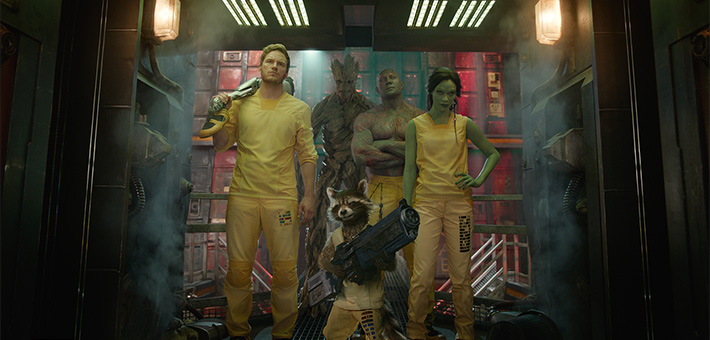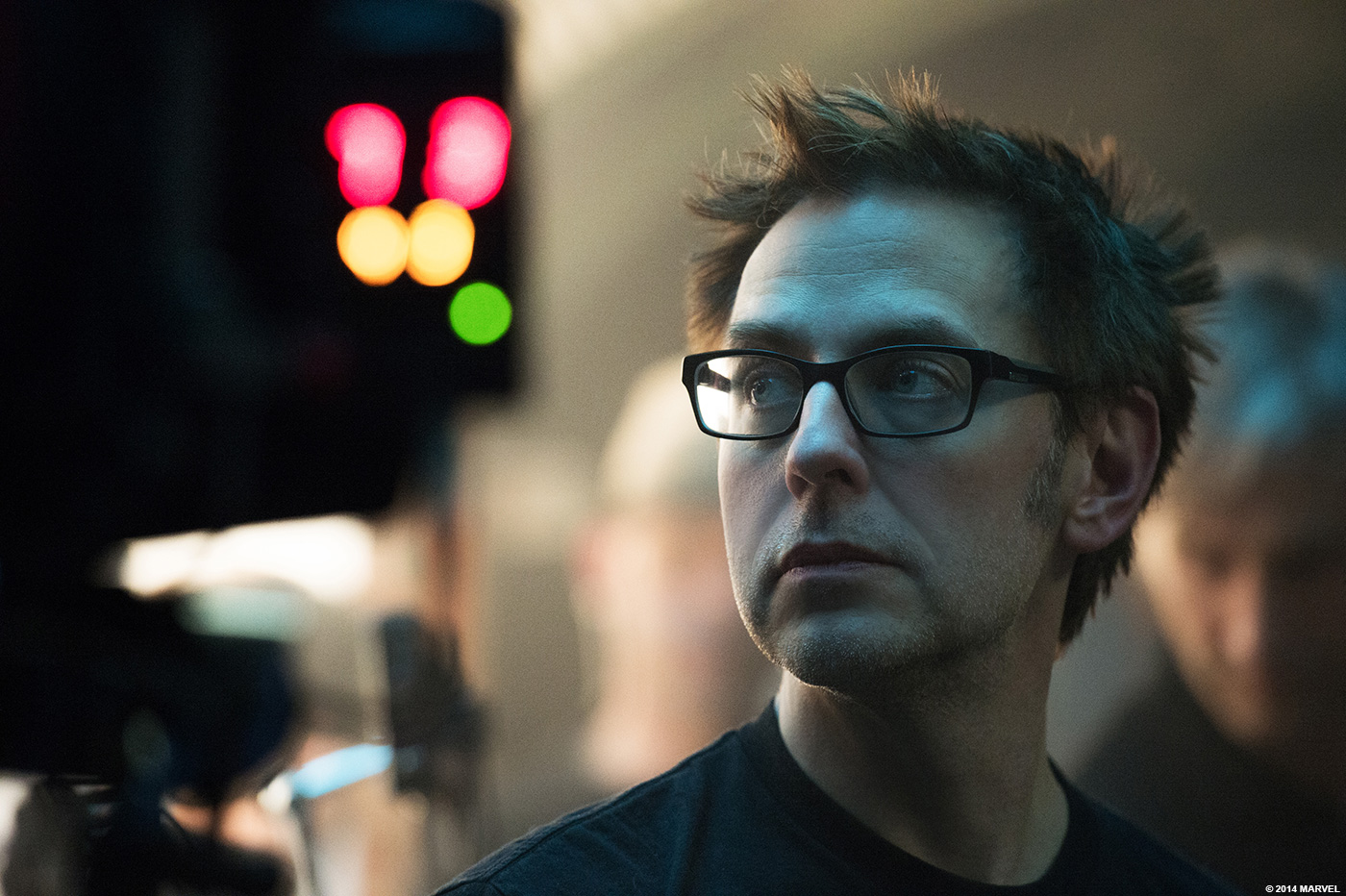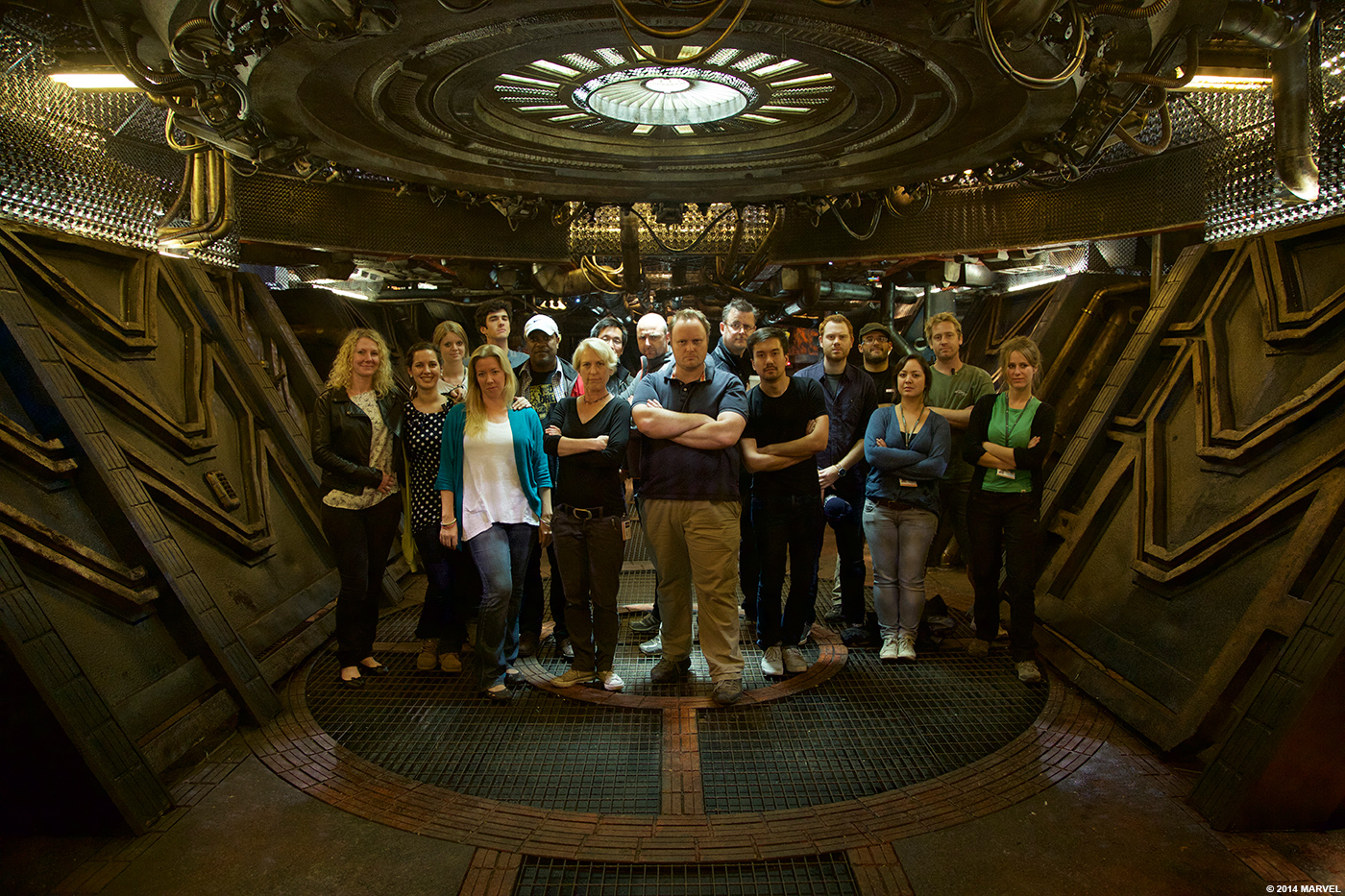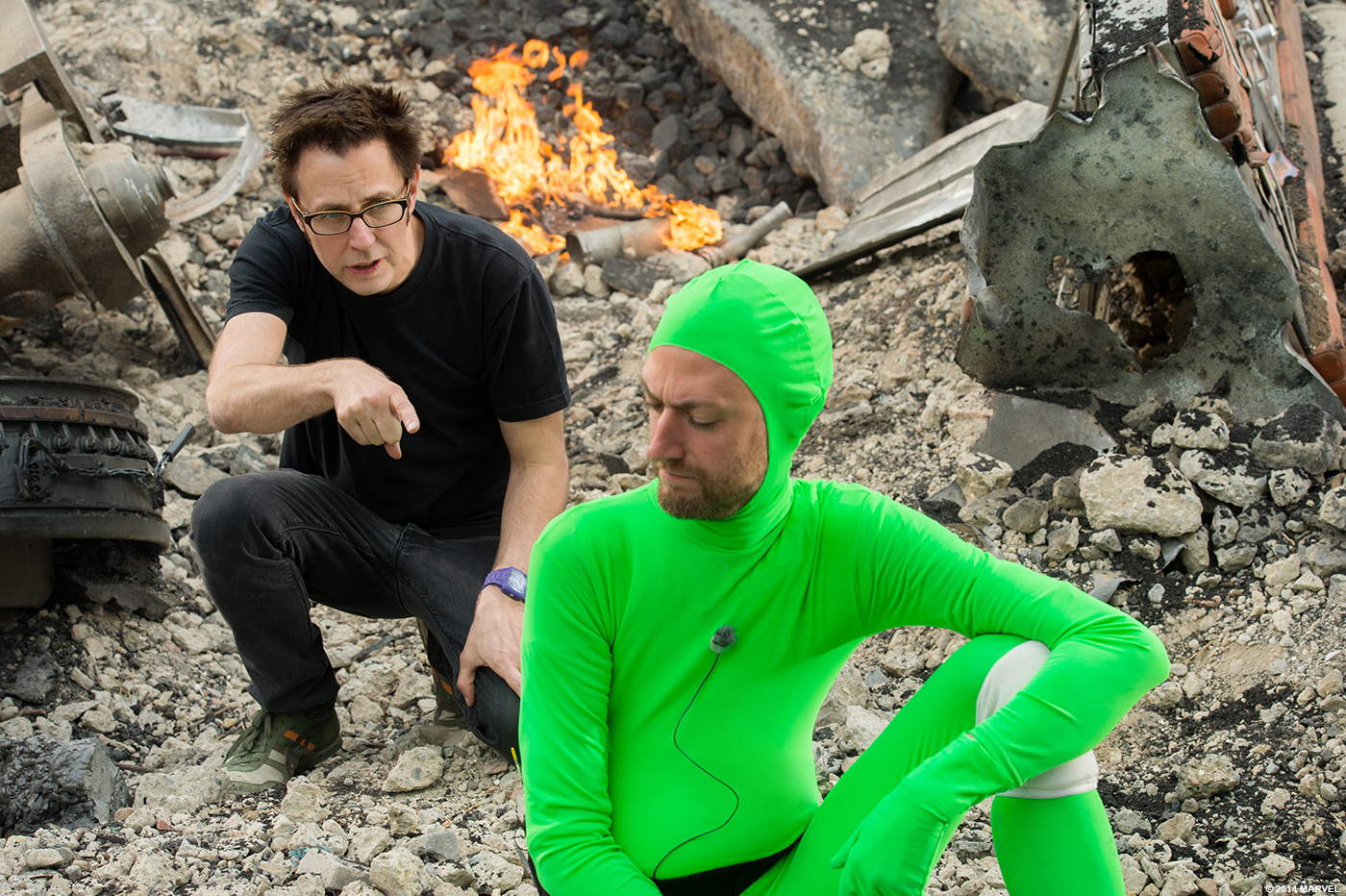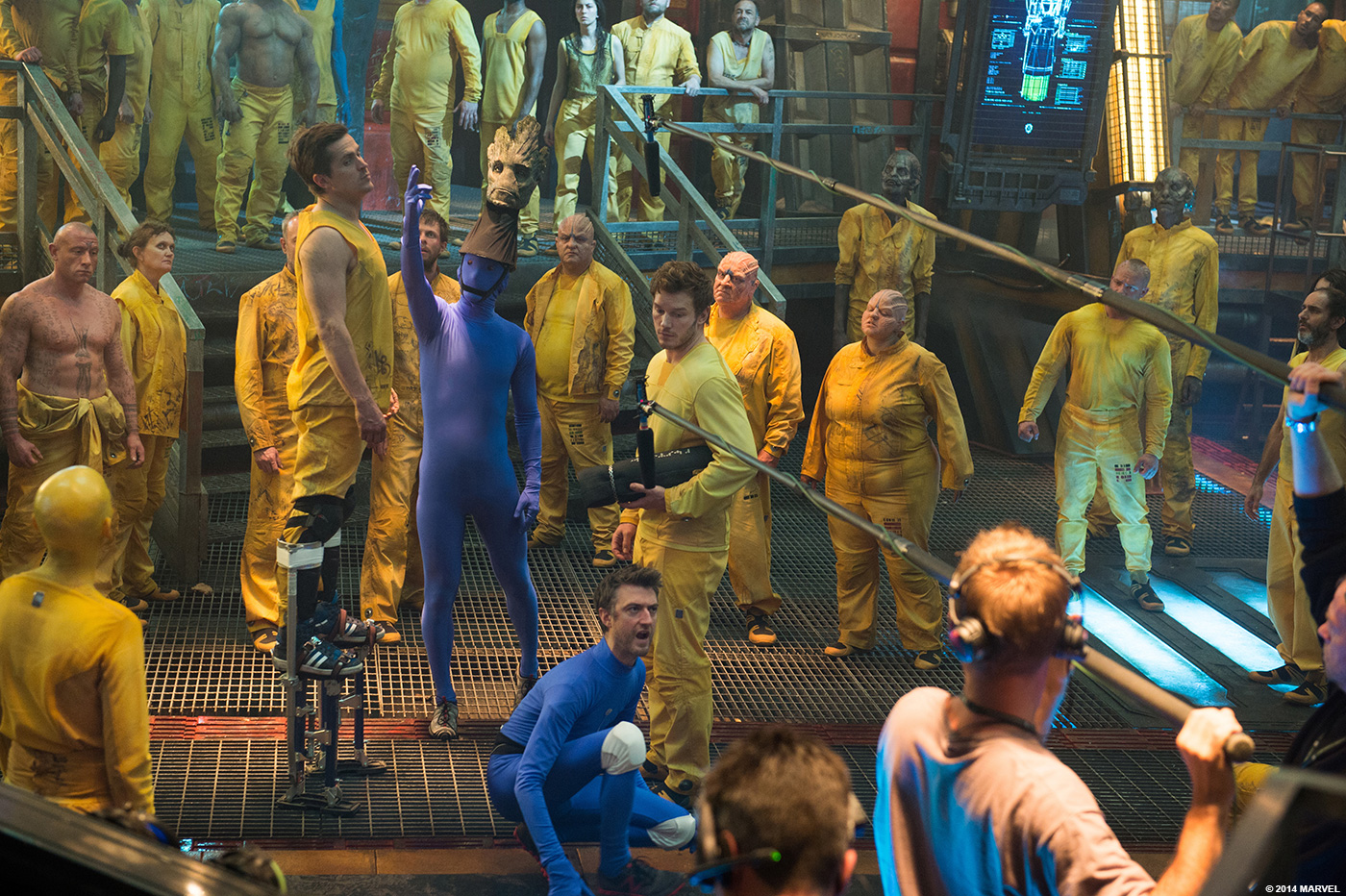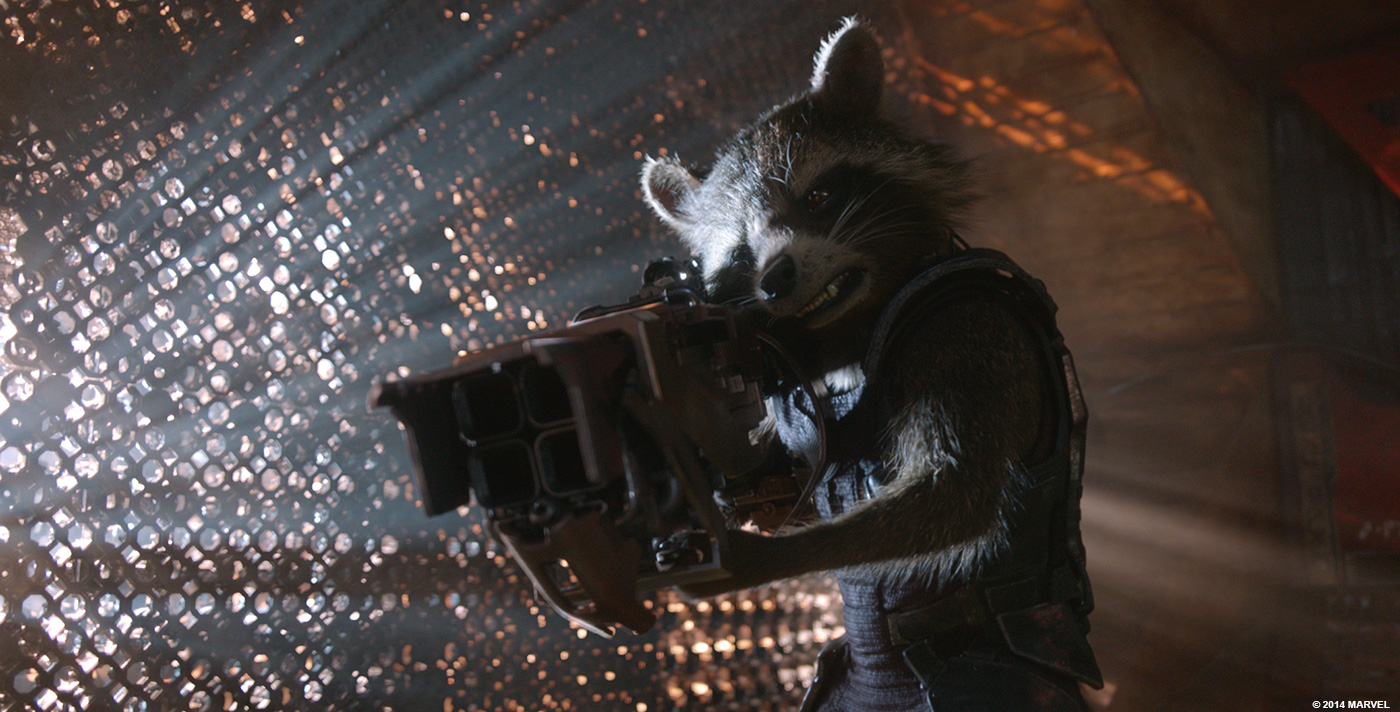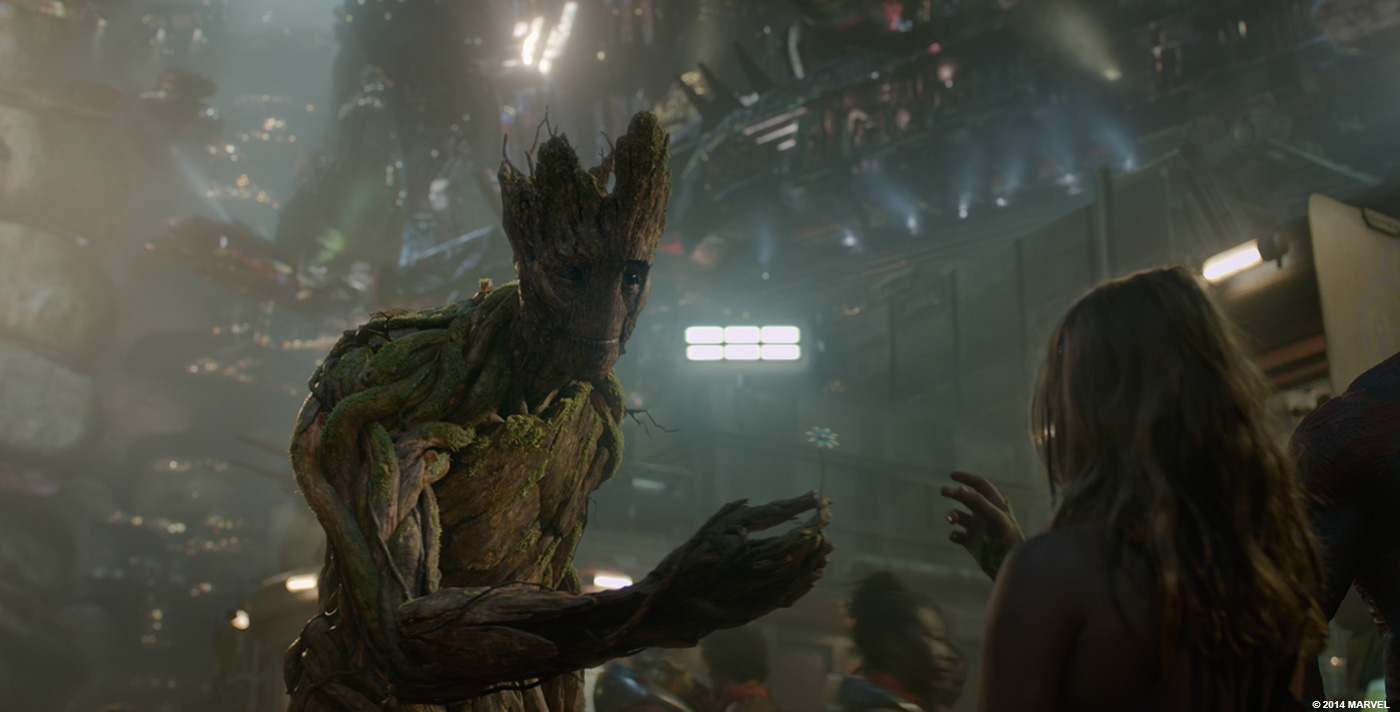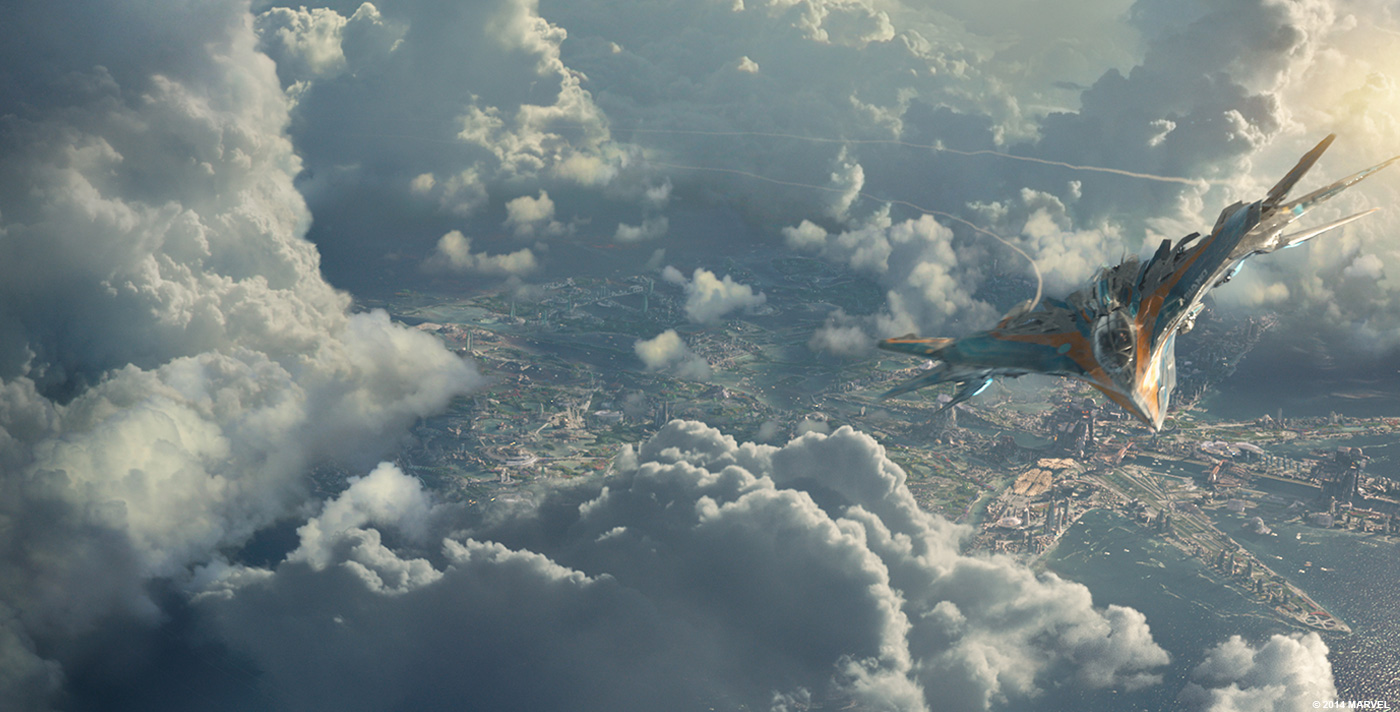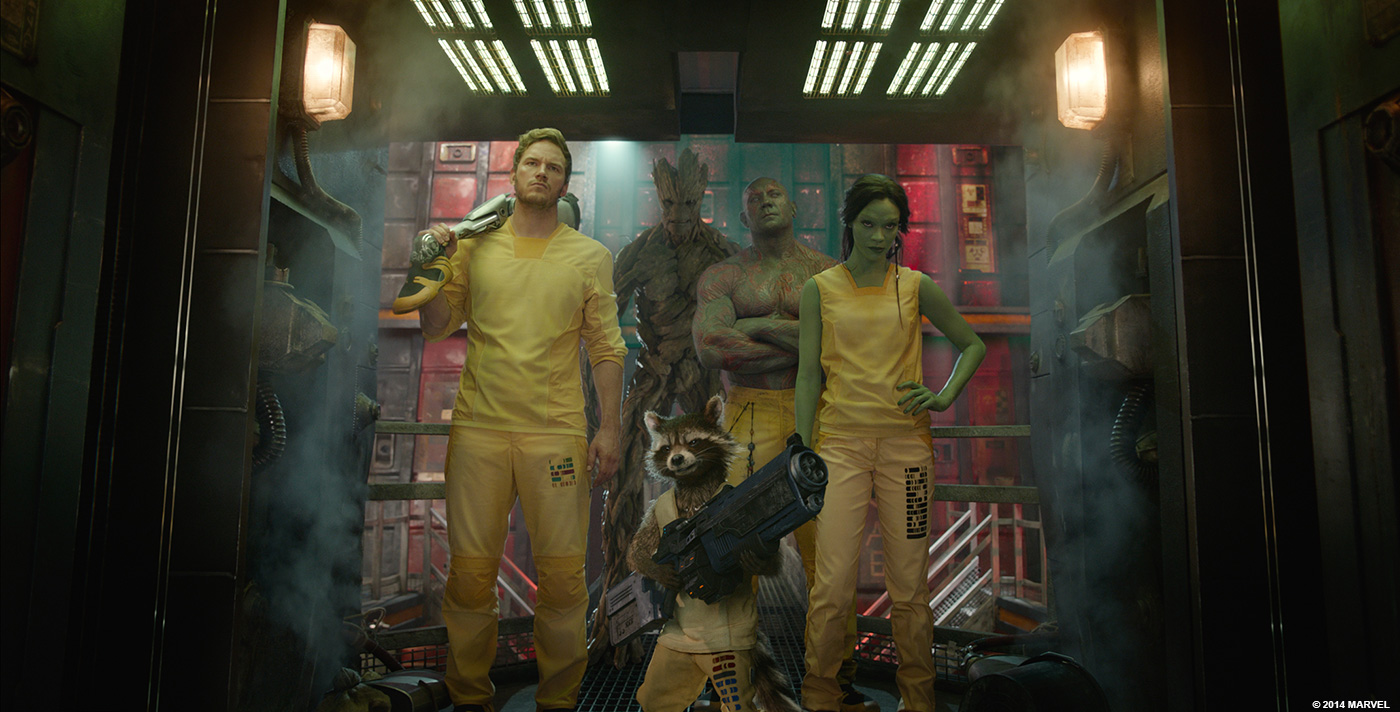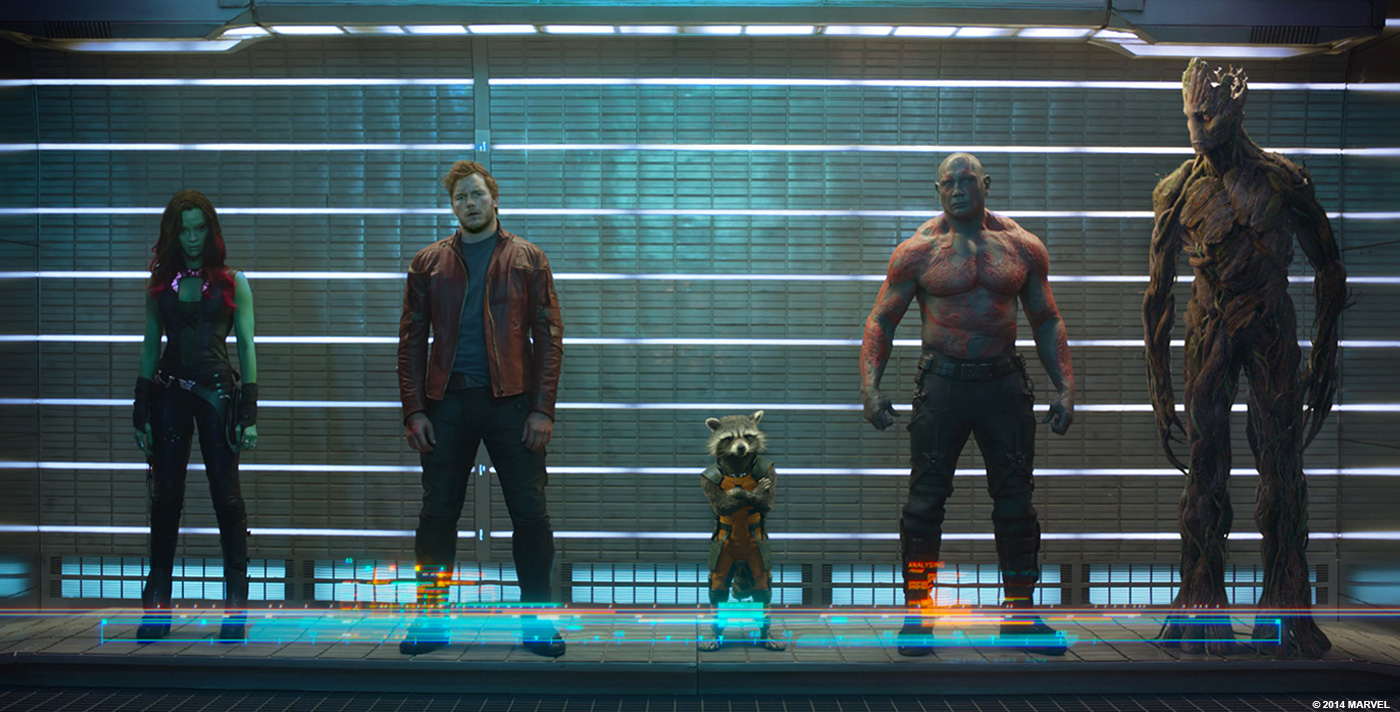During his last visit, in 2011, Stephane Ceretti talked to us in details about his work on CAPTAIN AMERICA: THE FIRST AVENGER. He then worked on CLOUD ATLAS and THOR: THE DARK WORLD.
How did you get involved on this show?
I have done a couple of film for Marvel as 2nd Unit supervisor on CAPTAIN AMERICA and THOR: THE DARK WORLD. As I was working on TDW, Victoria Alonso, executive in charge of post production and VFX at Marvel asked me if I was interested in doing a Space Opera with a Tree and a Raccoon… That was pretty tempting to say the least. I met with James and the producers of the movie, as well as with Susan Pickett, the VFX producer on the show. It went quite well and I got the job. I was later joined by Olivier Dumont as my associate supervisor. He took care of the 2nd unit shoot, the additional photography and all the graphics in the film.
What was your role on this show?
I was the production VFX supervisor for Marvel.
That’s your first collaboration with director James Gunn. Can you tell us more about it?
Honestly, it was awesome. James is so high energy and involved in the project, he loves VFX and Rocket and Groot were so important for him. We got along together really well. It was a huge jump for him coming from indie production with small budgets, and he handled it so well.
What was his approach about the visual effects?
He is very involved, as he is with everything else. He also likes to push for practical when possible, as I do. Obviously with a movie like GUARDIANS there are limitations to what you can do practically. In post production we had James in all of our animation reviews, for him animating Rocket and Groot was like directing actors, it made total sense to approach it this way.
Can you describe one of your typical day on-set and then during the post?
Days on set were very intense as we had pretty much no moment without VFX being shot. So all in all extremely busy making sure everything was in place, talking with James about what he had setup in pre production and making sure everything was happening as planed, and getting ready for new ideas. Also I had quite a lot of interaction with the actors and we had to explain about Rocket and Groot, show previs and setup eyelines for all of them.
In post, our days were organized with a 2 big cineSync sessions in the morning with our 2 main UK vendors, MPC and Framestore, then a mixture of cineSyncs in the afternoon with US vendors, postvis reviews and in-house reviews with editorial, then evening reviews with James, editorial and the studio execs. Pretty busy all day.
Can you tell us more about your work with Proof Inc. and The Third Floor?
Again, James was very involved. He was preparing the movie in every details. He wrote the script and also thumbnail the entire movie. Once he had gone through a full sequence with thumbnails, these were presented to the storyboard artists, as well as myself and Earl Hibbert, our previs supervisor. Once storyboards got drawn we would have another meeting with James to discuss previs and also many other meetings and refinements done throughout the previs process. We also worked a lot with Charlie Wood, the production designer, and all his art directors to make sure we had the proper set design and ship designs for the previs. It was really important for James and myself that our previs represented how our sets were accurately to make sure there was a limited amount of surprises when shooting. Most of the set design is done in 3D modeling packages these days, like Google Sketchup or even better, Maya which makes the transition from art department to previs much faster.
The movie features two full CG characters, Rocket and Groot. Can you explain in details about their design and creation?
The characters were really well written inside the script. Actually from the moment I joined the production to the end I think they have changed the least in terms of their story points. They were in every point as well written and developed as all the other guardians.
James and the Marvel group were adamant that they should be as real as possible, in their look, animation and design, and behavior. James kept saying that Rocket is the heart of the movie and Groot is the soul, and that they should not be considered as Bugs Bunny in the middle of a bunch of humans, but as real, physical and tangible characters.
In terms of design, Marvel has an internal design group and Charlie Wen was initially driving the design push for both Rocket and Groot. Everybody got involved on the UK side as well, David White from the SMUFX department started doing some models for Groot and Rocket, and
Alexandra Byrne from Costumes worked on sourcing some material and fabrics for us. Also Barry Gibbs started building some props as reference for us, most of the props being designed by the Art Department concept artists lead by Charlie Wood, the production designer. It was a huge collegial effort and everybody was excited to participate and help in the process. I must say that both Rocket and Groot were considered by the physical production people as important as all the other real characters, which was a very important part in grounding them into the film. We had Framestore and MPC, our two main vendors on board pretty early in the process too so we could start building the assets and go through many revisions and enhancements involved in creating two of the main characters.
We did not do any motion capture for both Rocket and Groot. On set we had Sean Gunn (James’ brother) as Rocket and Krystian Godlewski as our Groot stand-in. Our decision very early in the process was to animate these characters in a pretty traditional way, rather than doing performance capture. We did not know at the time who would be voicing both Rocket and Groot anyway. Our process was to shoot references of the scenes with Sean and Krystian first, so all the actors and the technical crew could familiarize themselves to the action and what was happening in the scene for framing reason and acting. Once we had blocked this we would do the same scene without our stand ins, and Sean would be off camera delivering his lines to the actors. We would place markers and ping pong balls on the set for the actors to know where to look at. It turned out to be quite tricky sometimes. I must say our group of actors responded extremely well to this and under James’ direction were 100% on board with the process. It made a huge difference and made our animation job much more fluid and interesting. Sean Gunn acted every single shot in the film, even the ones where we had only Rocket in the shots. This allowed us to have a temp voice available for postvis animation and also shot for the editors to edit the movie, and references to show to the voice actors so they could understand the flow of the scene more accurately. Once we had a first pass of the edit the voice recording started with Bradley Cooper and Vin Diesel. We had cameras filming them while they were delivering their lines. These recordings were sent to the animators to reference facial expressions and body language and inspire themselves, it was a very important material we would reference to all the time in our animation reviews.
We had both vendors rendering Rocket, and Groot. It was essential that the fur would match between the two vendors and was quite a challenge as they were both using different fur systems and render engines. Framestore created the Rocket model. They are using Arnold as a render and the fur is fully raytraced with shadows and transparencies. It was a huge amount of fur and as we needed super close ups on Rocket’s face the level of detail was insane. The renders were taking a lot of time, sometimes a couple of days to render one shot on multiple CPUs was necessary to get the right level of detail without aliasing of render noise. We references a real raccoon called Oreo to analyze the characteristics of a Raccoon fur which are quite amazing, the have so many variations in colors and size and the way they clump as well. Framestore did an amazing job at replicating real life and applying it to Rocket.
For Groot, we obviously looked at different types of trees and moss, but Groot is not made of a single tree. The guys from MPC went to Kew Gardens in London to photograph multiple tree types and get detailed textures for various parts of his body. For his growth animation, we referenced time lapse animation of growing trees and plants. For his animation, Groot is very childish in a way, like a young teenager, always looking around and trying to understand the environment but at the same time easily distracted by anything. So looking at how kids behave and sometimes loose track of situations was a good reference for us. But at the same times he can become extremely powerful and badass, we had to accommodate both sides of his personality, and make sure he was both sweet and people would care for him, and a very impressive character when he is going for a fight.
Can you tell us more about the various locations that we visited during the movie?
Morag was a mixture of the White Desert in Egypt where we went to take pictures and texture/shape references, and the Grand Canyon. But we also came up with these extra gigantic arch structures that gave it a more alien look. From inception this planet was supposed to have pretty strong weather with Geysers, winds and a lot of Rain. We add practical geysers on set as well as rain and wind machine, but MPC enhanced these and extended all of the practical sets. They also built the temple interior and the canyon where the Milano flies at the end of the sequence.
Knowhere and the Kyln were built by Framestore. The Kyln exterior was a 3D model with Matte painting and inside the Kyln we had to extend up the main prison area which was already a huge set built by the Art Department.
For Knowhere we had one street built where we could shoot the action happening with our characters. The rest is a huge CG creation which took a lot of work to do. James wanted a mixture of organic matter from the bones and spine of the skull and some metallic structures for the mining operations as well as favelas type structures for the living quarters inside the skull. We worked on lot with Framestore on the lighting and the atmospherics inside and outside the skull to create a sense of scale and depth in and around the Skull. James really wanted the place to be very colorful and we came up with a textural and lighting palette that worked pretty well, but we also wanted to make sure we could understand the chase without being overloaded by the amount of visual information. I think we got the balance quite right in the end. Knowhere was a gigantic asset for Framestore, it is the biggest environment they have built to date.
Xandar was a mostly fully digital creation done by MPC based on concepts done by the art department, and specifically a concept Artist named Olivier Pron who worked with me at Buf in Paris and MPC in London. MPC referenced building from all over the world. Xandar is supposed to look a bit more like a futuristic Earth-like planet. MPC created an enormous amount of buildings, city dressing and alien vegetation inside the city. The city has a very specific design as its shape is the one of the Nova Corps Logo, which made it a very interesting feature to look at from the sky, from where most of the final battle would take place. MPC also created the atmosphere on top of the city with enormous cloudscapes to give texture and orientation to the battle. Again, this was a huge asset and parts of it had to be built to a very high level of details and setup for destruction simulation.
How did you split the work amongst the other VFX studios?
MPC did Morag, all of what is happening on and around Xandar and most of what is happening on board the Dark Aster. They were in charge of building the Groot asset and sharing it with Framestore.
Framestore as in charge of the Kyln sequence and Knowhere. They were also in charge of creating the Rocket asset and sharing it with MPC.
Method did some environment work inside the Dark Aster, black fire effects during Ronan’s benediction scene, and the holograms inside the Collector’s lab, as well as the opening of the orb device in the same scene. They also took care of the scenes within the Nova hub with Glenn Close (holograms and Xandar views through the windows).
SPI created the environment for the Engine Room fight within the Dark Aster, and took care of the entire sequence, as well as creating Howard the Duck !
Luma was in charge of many different fx shots throughout the movie but their biggest assignment was to create a full digital Thanos.
Lola was mostly in charge of taking care of Drax’s fixes which was a very important job and a huge amount of shots.
We had a few other vendors involved who helped throughout the movie as well as an in-house team of compositors. Also we had Proof for previs and postvis work, which was essential for this film, as well as Third Floor coming to do previs for additional photography at the end.
Cantina Creative took care of the graphics.
Can you tell us in details about your collaboration with the various VFX supervisors?
Pretty good as always. I knew very well Nic Aithadi from MPC, as well as Greg Steele from Method. I had worked with Luma before on X-MEN so I knew a bit of their team. I have met the amazing guys from Framestore, Jonathan Fawkner and Kyle Mc Cullough.
I always try to keep it fun, especially on a movie like this one. Even though we had lots to do we want everybody to be fully involved and give their best all the time.
These various studios are based all around the world. How did you follow their work progress?
cineSync ! We had countless cineSyncs with all our vendors.
How was your collaboration with Executive Producer Victoria Alonso?
I love Victoria. She is a force of nature and can move mountains bigger than mount Everest, and yet make it all look easy. She has such a sharp mind. Being in reviews with James, Victoria, Louis D’Esposito and Kevin Feige is like being surrounded by the biggest brains in the Galaxy… It’s quite hard to keep up sometimes but it’s so stimulating it’s an experience I really enjoyed.
What was the biggest challenge on this project and how did you achieve it?
Making Rocket and Groot believable.
What do you keep from this experience?
Lots of laughs ! Lots of good friends.
How long have you worked on this film?
A bit more than 18 months.
How many shots have you done?
2200 are in the film, out of the 2400 cuts in the movie. But we had way more than this.
What was the size of your team?
We had quite a lot of people in the UK and in the US. I would say all in all, if you count all the set people and our coordinators and production managers a total of 30 people.
What is your next project?
I can’t talk about it just yet !
A big thanks for your time.
© Vincent Frei – The Art of VFX – 2014


